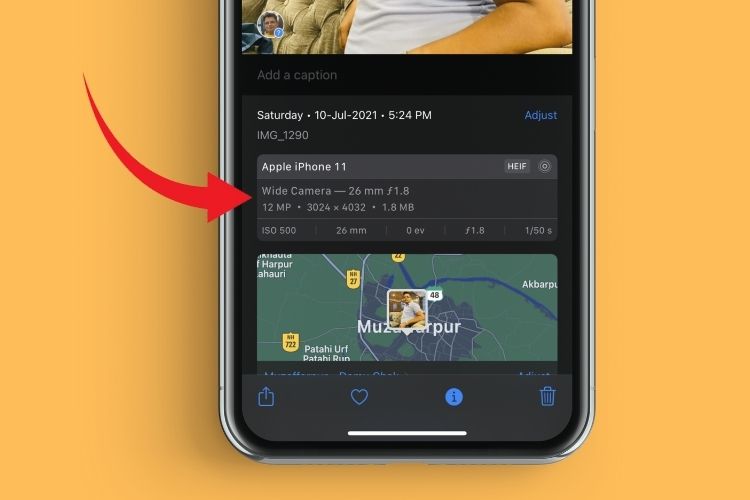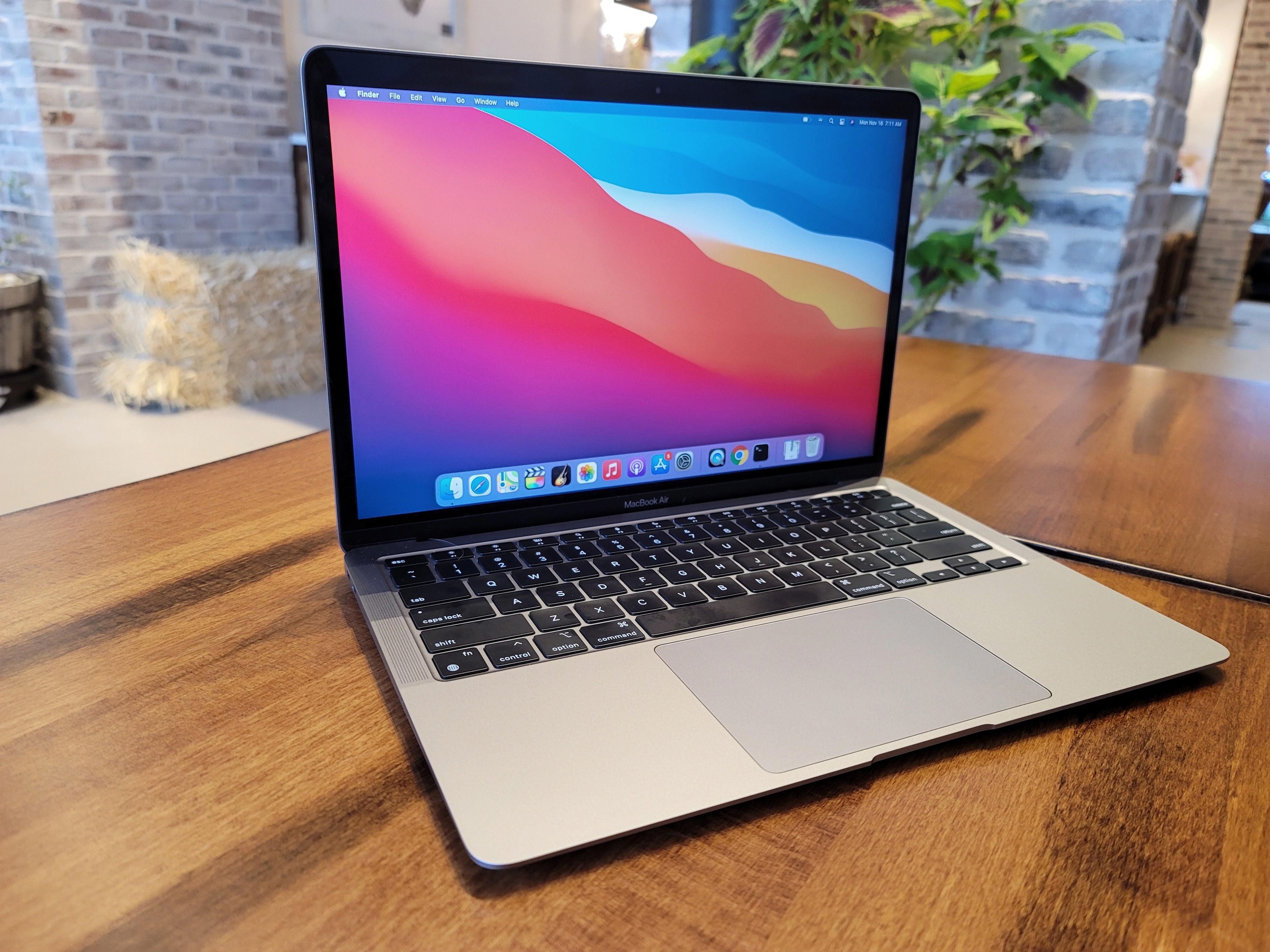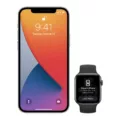
When it comes to iPhone photography, the capabilities of our devices continue to impress. Not only can we capture stunning images with just a few taps, but our iPhones also store a wealth of information about each photo we take. This information, known as metadata, can provide valuable insights into how and where a photo was taken. In this article, we will delve into the world of iPhone photo metadata and explore what it can reveal.
To access the metadata of an iPhone photo, simply open the Photos app and select the desired image. Tap the info icon (i) located below the image, and you will be presented with a range of information about the photo. One of the sections you will find is the EXIF data, which stands for Exchangeable Image File Format.
EXIF data contains a plethora of details about the photo, including the date and time it was taken, the camera model and manufacturer, the shutter speed, aperture, ISO, focal length, and much more. This information can be particularly useful for photographers who want to analyze their shooting settings or for those who simply want to know the technical specifications of a photo.
Additionally, the EXIF data also includes GPS coordinates, which can reveal the exact location where the photo was taken. This feature can be handy for organizing your photos by location or for recalling where a particular image was captured.
Besides EXIF data, there are other types of metadata that can be associated with iPhone photos. For example, you can assign titles to your photos, making it easier to search and identify them later. You can also add keywords or tags to categorize your images and improve searchability.
Furthermore, the Photos app on your iPhone also stores information about any edits or adjustments you make to your photos. This includes details about cropping, filters applied, and other modifications. This feature can be beneficial if you want to keep track of the changes you have made to an image or revert back to the original version.
But the metadata doesn’t stop there. When you share a photo through messaging apps or email, additional metadata may be added to the image. This can include information such as the sender’s name, the date and time of sending, and even the device used to send the photo. It’s crucial to be aware of this additional metadata, especially when sharing sensitive or private images.
While iPhone photo metadata can provide a wealth of information, it’s important to note that some platforms or social media apps may strip or modify this data when sharing or uploading images. Therefore, the availability and accuracy of metadata may vary depending on where the photo is being viewed or accessed.
IPhone photo metadata can offer valuable insights into the technical details, location, edits, and other information associated with your images. It allows you to have a deeper understanding of your photography and can assist in organizing and managing your photo library. So next time you capture a memorable moment with your iPhone, take a moment to explore the metadata and uncover the hidden stories behind your photos.
See Also: The Best iPhone Accessories to Enhance Your Everyday Life for our top rated list of accessories!
How Do You See Photo Details On iPhone?
To view the details of a photo on your iPhone or iPad, follow these steps:
1. Open the app that contains the photo, such as Notes, Mail, or Messages.
2. Locate the photo you want to view the details of and touch and hold it to select it. This action will typically bring up a menu with various options.
3. Look for the “Info” button or icon, usually represented by an “i” or an “information” symbol. Tap on this button.
4. Once you tap on the Info button, you will see a new screen or panel with additional details about the photo.
5. To further explore the photo, you can tap on the icon that appears within the photo or below it. This icon might vary depending on the app you are using, but it is often a magnifying glass or a similar symbol.
6. After tapping on the icon, a feature called “Visual Look Up” will be activated. It will provide you with results from Siri Knowledge and the web related to the content of the photo.
7. If you want to delve deeper into the information provided, tap on any of the results displayed to learn more.
Please note that the availability and specific steps may vary slightly depending on the version of iOS and the app you are using.
How Do You Get EXIF Data From Your iPhone Photos?
To access the EXIF data of your iPhone photos, follow these step-by-step instructions:
1. Launch the Photos app on your iPhone.
2. Browse through your photo library and select the specific photo you want to view the EXIF data for.
3. Once you’ve selected the photo, tap on it to open it in full view.
4. At the bottom of the screen, you’ll see a row of icons. Tap on the “i” icon, which represents the info option.
5. This will open up the information panel for the photo, displaying various details about it.
6. Scroll down the information panel until you reach the section labeled “EXIF”. This section contains all the EXIF metadata for the selected photo.
7. To view more EXIF data, simply swipe up within the EXIF section. This will reveal additional information such as the camera model, aperture, exposure time, ISO, and more.
8. If you want to know where the photo was taken, look for the “Location” data within the EXIF section. It typically includes the latitude and longitude coordinates of the photo’s capture location.
9. You can also tap on the map thumbnail within the location data to view the exact location on a map.
10. Take note that not all photos may have EXIF data, especially if it has been removed or stripped during editing or sharing processes.
By following these steps, you will be able to access and explore the EXIF data of your iPhone photos, including details about the camera settings and the location where the photo was taken.
What is Metadata in Apple Photos?
Metadata in Apple Photos refers to the additional information associated with each photo that helps to organize and categorize them. It includes various details such as the title or filename of the photo, the date and time it was taken, the location where it was captured, and other relevant information.
Here are some key points about metadata in Apple Photos:
1. Title: The title of a photo is a user-assigned name or label that helps to identify and distinguish it from other photos. It can be used to provide a brief description or summary of the content in the photo.
2. Date and Time: Metadata also includes the date and time when the photo was taken. This information is automatically recorded by the camera or device that captured the image and helps with chronological organization.
3. Location: If your device has GPS capabilities, Apple Photos can also store the geographic location where the photo was taken. This feature is called geotagging and enables you to search and sort photos based on their location.
4. Keywords and Tags: In Apple Photos, you can add keywords or tags to your photos to make them easily searchable. These keywords can be descriptive terms or phrases that represent the content or theme of the photo.
5. Editing Information: Metadata can also indicate whether a photo has been edited or modified in any way. This can be useful to keep track of any changes made to the original image.
6. Badges: Apple Photos uses badges to highlight certain characteristics of a photo. For example, a badge may indicate that a photo has been favorited, marked as a favorite, or shared on social media.
By displaying metadata in Apple Photos, you can have a better understanding of the details associated with each photo, making it easier to organize, search, and manage your photo library.
Conclusion
IPhone photo metadata provides valuable information about the image, such as the date and time it was taken, the location where it was captured, and even details about the camera settings used. This metadata can be accessed and viewed on both iPhone and Mac devices, allowing users to gain insights into the technical aspects of their photos.
By accessing the EXIF data on an iPhone, users can see additional information like the aperture, shutter speed, ISO, and focal length used for each photo. This can be particularly useful for photographers who want to analyze and improve their shooting techniques.
Furthermore, iPhone users can also utilize the Visual Look Up feature to learn more about the objects or scenes present in their photos. This feature leverages Siri Knowledge and the web to provide users with detailed information about the elements within their images.
IPhone photo metadata offers a wealth of information that can enhance the user’s experience and understanding of their photos. Whether it’s for personal use or professional photography, accessing and analyzing this metadata can help users appreciate the technical aspects of their images and gain valuable insights into their photography skills.








